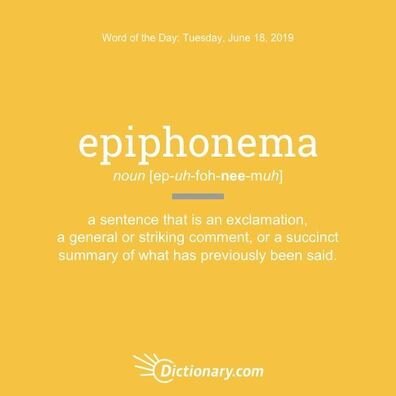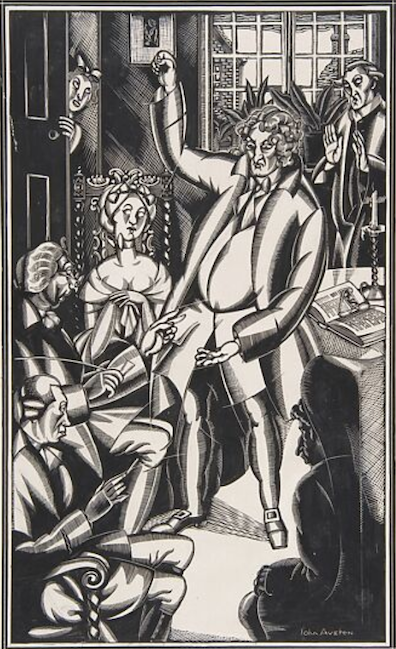It is meet to be here
It
is meet to be here
In Brief
Figure of speech. Tarring the Romans as a people
chiefly interested in constructing cloacae,
Professor MacHugh recalls the Jews having said "It is meet
to be here. Let us build an altar to Jehovah" so that he
can conclude his tirade with a comical image of the Roman
conqueror: "He gazed about him in his toga and he said: It
is meet to be here. Let us construct a watercloset."
This is a parodic example of the rhetorical epiphonema,
an epigram that sums up what the orator has previously said.
Read More
An epiphonema (EH-puh-foh-NEE-muh, from Greek epi- = upon + phonein = to speak out) sums up a passage or an entire speech with a pithy sentence or two. In its epigrammatic quality it resembles a moral at the end of a fable, but unlike such staid summaries it was expected to be exclamatory, attention-catching, rousing. In The Garden of Eloquence, Henry Peacham defines it as "an exclamation of a matter uttered, or approved, conteining the summe and conclusion thereof." He cites several biblical examples: "Lo, we have forsaken all and followed thee” (Matthew 19:27); "He hath doen all things well: he hath made both the deafe to heare, and the dumbe to speake” (Mark 7:37); "So mightily grew the word of God and prevailed” (Acts 19:20). Particularly relevant to Ulysses is Peacham's paraphrase of a line from Virgil's Aeneid: "So weighty a matter it was to set up the Roman nation."Professor MacHugh's concluding sentence, it need hardly be pointed out, lacks the somber gravity of these utterances.

